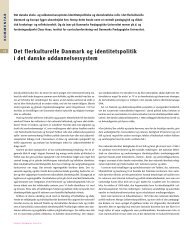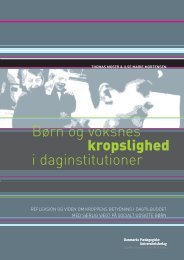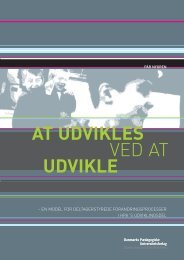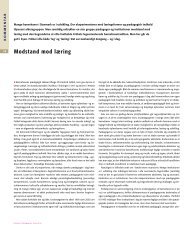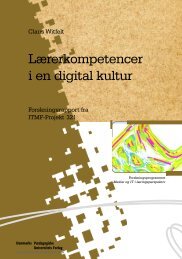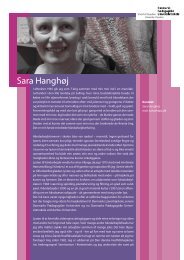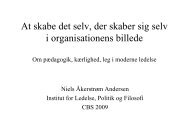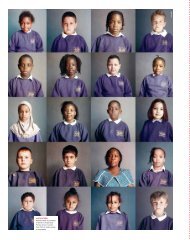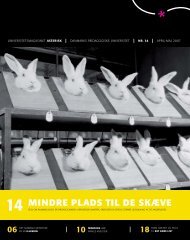SRI-Teknisk rapport-sen.v13 - DPU
SRI-Teknisk rapport-sen.v13 - DPU
SRI-Teknisk rapport-sen.v13 - DPU
Create successful ePaper yourself
Turn your PDF publications into a flip-book with our unique Google optimized e-Paper software.
112<br />
(i.e., holding schools accountable, beliefs); (b)<br />
teachers’ support of the<br />
MSPAP for instructional purposes<br />
• Current Instruction and Assessment in the Classroom<br />
(~20 items): (a) degree<br />
to which instruction and assessment reflected each<br />
of the state-defined learning<br />
outcome standards; (b) extent to which instruction<br />
and assessment reflected<br />
reform-oriented problem types • Change in Instruction<br />
and Assessment from 1993 to 1997–1998 (~20<br />
items):<br />
(a) change in emphasis on learning outcomes; (b)<br />
change in emphasis on the<br />
use of reform-oriented problem types<br />
• MSPAP’s Impact on Classroom Instruction and<br />
Assessment (~6 items): (a)<br />
extent to which the MSPAP influenced changes in<br />
the classroom<br />
• Professional Development Support for MSPAP (~8<br />
items): (a) types of activities<br />
related to the MSPAP; (b) amount of professional<br />
development support<br />
The student questionnaires paralleled the teacher<br />
questionnaires when appropriate.<br />
Thus, students were also asked about the nature of<br />
instruction and classroom<br />
assessment activities.<br />
So that individual differences in change can be<br />
modeled and the correlates of<br />
change can be assessed, two levels of statistical<br />
modeling are required (e.g., Bryk<br />
& Raudenbush, 1992). In the first level, Level 1<br />
(within-school model), trends<br />
across the repeated measurements for individual<br />
schools are modeled. At Level 2<br />
(between-schools model), individual differences in<br />
change across schools from<br />
Level 1 are modeled in relation to hypothesized<br />
explanatory factors (e.g., dimensions<br />
from the teacher and student questionnaires, and<br />
the variable of percentage<br />
of free or reduced-price lunches).<br />
Dimensions underlying the questionnaires administered<br />
to teachers and students<br />
from the schools in the sample were hypothesized<br />
to explain individual differences in school performance<br />
with time. However, because of the relatively<br />
small number of schools in the sample, this study<br />
focused on a subset of dimensions<br />
from the questionnaires that may be of more interest<br />
to stakeholders. From<br />
the teacher questionnaire, two dimensions were



